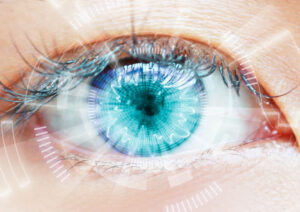
You’re on the roof, looking out onto the NYC skyline. You let your eyes drift from one end to the other, taking in the splendor of the city when you notice a small dot somewhere in your perception. In an odd way, you still try to steady your gaze and examine the dot. Then you blink, your eyes go down and it moves down. You scan, testing for the dot or dots and sure enough, there it floats with you, in sync with your every move. We call these, eye floaters.
What are eye floaters, you ask?
Floaters in the eye are a little peculiar in their existence, but nothing to fear. There’s a part of our eye between the lens and the retina that contains this clear, gel-like substance. Let’s call this the jelly. As we get older, the jelly starts to liquefy, but not all of the jelly dissolves at the same time. With no other place to go, jelly particles float around in the new, watery substance. As hard as we try and focus to see the little dots, or the jelly particles, we can’t. In fact, we aren’t actually seeing the eye floater particles themselves. As light passes through the eye, the floaters’ shadows are cast on the retina, and those are the dots we see. It’s amazing how sensitive the human eye is.
Contact Us
If you have more questions about LASIK procedures, get in touch with us.
Related Blogs

Who Should Not Have Laser Eye Surgery
Laser eye surgery, commonly known as LASIK (Laser-Assisted In Situ Keratomileusis), has revolutionized the world of vision correction. It’s a procedure that has enabled millions

LASIK eye surgery: What is LASIK and how does it work?
What Is LASIK? Experts categorize LASIK as a refractive eye surgery in which lasers are used to correct vision problems. LASIK corrects several refractive errors,

Everything You Need To Know About The Lipiflow Treatment
LipiFlow is often referred to as a ground-breaking technology that is able to treat dry eye issues caused by meibomian gland dysfunction, or MGD. Experts
